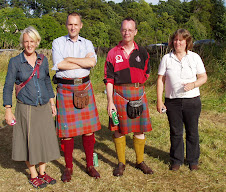We’re going to join James and his family in Strathardle today. Back on Sunday, as my husband has a (routine) doctor’s appointment on Monday – when a blog entry will appear, DV. Indeed, we are hoping to establish a slow, rustic broadband connection up there on Friday, day after tomorrow, for James’s sake. If we succeed, you may even hear from me sooner.
VKB
Today’s big excitement: the eBay auction for No 17 will soon end. My team has gone into a huddle on the price. Helen (not sister) and I plan to confer by telephone this evening half an hour before the close. I will be long in her debt not only for her willingness to put her coolness under fire at my service, but also for the lack of the slightest hint, in her attitude, that I am not to be trusted out of the house with a chequebook.
No. 38, Spring ’51, sold yesterday for £12.65. (No. 17 has already reached £16.) So much for my hopes that everyone might have gone away for the summer. I keep a little database of the ones I bid on, and a few others, in which I record sellers and bidders with their top bids. There is a singular lack of pattern to it all. Some names recur a couple of times, but that’s about it. (I’ve got No. 38. I would have happily paid four or five pounds for this one, because mine lacks a cover, but it was not to be.)
The most expensive, so far, was No. 6 at £37.66. I didn’t even scrape in as the underbidder that time, and it all happened in the last minute. Next was 28, Spring ’46, at £26.15 – I was the underbidder there.
But I got no. 23, my precious wartime one, for £3.53, admittedly without its cover.
Comments
I’m absolutely sure you’re right, Jean in Cornwall, that “Kitchener stitch” is an American expression (in the broadest sense). If it relates to Lord Kitchener, it is obviously WWI in origin. But my hunch is that the phrase is not used anywhere between the wars. That’s why it seems particularly interesting that the WWII knitting-for-the-boys booklet my sister found and bought for me, doesn’t use it. Although all scholars know to beware of the argumentum a silentio.
That woman at Sussex University – was it? – who confidently “explains” Kitchener stitch on her website, never answered my email.
My theory remains that EZ’s informant was right, and Kitchener contributed a sock pattern with grafted toes to a Red Cross leaflet. And that the phrase got going when that leaflet resurfaced, probably in Canada, as knitting-for-the-boys itself resurfaced in 1939 and 1940.
Kitchener didn’t invent the technique, needless to say. I have a Paton’s book from the turn of the 19th-into-20th century which employs it. That book uses grafting for some socks, and on others, threads the yarn through the remaining stitches and pulls tight. Perhaps Lord K. even praised grafting for the smooth toe it yields.
But there are lots of suppositions here, and few facts.
Carol, thanks for your nice note. You’re right. There’s something fiendish about the Long Shawl. I think it’s because most of the motifs are asymmetrical, but I’m just finishing off the hexagons which are perfectly symmetrical, and I’m having trouble just as you describe. I still don’t think it’s the sort of difficulty which would amuse Ted, but I was wrong to recommend it for a beginning lace knitter.
Subscribe to:
Post Comments (Atom)



No comments:
Post a Comment